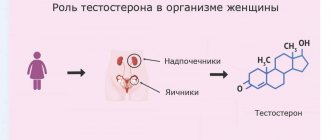Non-menstrual bleeding from the genitals is a sign of uterine bleeding. This pathology is a dangerous symptom of gynecological diseases.
Appointment with a gynecologist - 1000 rubles. Comprehensive pelvic ultrasound - 1000 rubles. Appointment based on ultrasound or test results - 500 rubles (optional)
You cannot hope that the bleeding will stop on its own: due to blood loss, anemia will begin, and the cause of the discharge will become chronic. The result will be infertility, purulent inflammation, atrophy of the tissues of the uterus and adjacent organs, cancerous tumors and other dangerous pathologies.
What you need to know about spotting
The content of the article
Any blood loss that occurs outside of the normal menstrual cycle should be assessed by a gynecologist, whether it is mild (spotting) or heavy bleeding.
However, note that, according to numerous scientific sources, one of the most common causes of intermenstrual bleeding is stress, so this symptom should not lead to premature anxiety and fears about malignancy.
Bleeding often occurs as a single symptom, but it can also be accompanied by other symptoms associated with the underlying pathology:
- pain in the abdomen or pelvis;
- vaginal discharge;
- asthenia and general malaise;
- nausea and vomiting;
- fatigue and feeling tired;
- pallor and tachycardia.
Tachycardia
Diagnosis of such conditions is based on recognition of the symptom and associated signs. It is also important to immediately perform instrumental tests, for example, transvaginal ultrasound, which is necessary to identify organic pathologies.
Therapy depends on the cause of the bleeding, as well as on the woman’s age and her desire to have offspring; the choice of method lies with the gynecologist.
Cost of consultation for uterine bleeding?
| Name of service | Price, rub.) |
| Primary appointment with an obstetrician-gynecologist | 2000 rub. |
| Repeated appointment with the obstetrician-gynecologist | 1500 rub. |
| Primary appointment with an obstetrician-gynecologist (candidate of medical sciences; doctor of medical sciences) | 2100 rub. |
| Repeated appointment with an obstetrician-gynecologist (candidate of medical sciences; doctor of medical sciences) | 1600 rub. |
All our services and prices
The main causes of vaginal pathological bleeding
There are many causes of vaginal bleeding, but they can generally be grouped into 5 broad categories:
Complications during pregnancy (sometimes undiagnosed, that is, which the woman does not yet know about) include:
- abortion (miscarriage);
- ectopic pregnancy;
- gestational trophoblastic disease.
Dysfunctional reasons:
- anovulatory cycles;
- polycystic ovary syndrome;
- less often metrorrhagia.
Benign organic pathologies:
- uterine fibroids;
- uterine polyps;
- adenomyosis;
- endometriosis;
- genital infections.
Malignant organic pathologies:
- endometrial cancer;
- cervical cancer;
- vaginal cancer;
- sarcomas.
Common systemic causes:
- blood clotting pathologies;
- leukemia;
- hypothyroidism;
- liver and kidney failure.
Spotting may occur during the first cycles of taking hormonal contraceptives (birth control pills) and after using the hormonal IUD.
What is implantation bleeding and how can it be distinguished from menstruation?
Implantation bleeding is not on the list of reliable signs of pregnancy. But it was present in the lives of a quarter of pregnant women. Its main manifestation is the appearance of a small amount of scarlet blood (sometimes streaked) on days 16-22 of the cycle. This is the time when, after fertilization, the zygote has reached the uterine cavity and is implanted (attached) to its wall. During implantation, a woman may feel mild nagging pain in the lower abdomen, which is very different in nature from menstrual pain.
But implantation bleeding will never be the same in volume as menstruation. The small (microscopic) size of the zygote cannot provoke severe bleeding. Therefore, most women simply do not even notice this event.
Bloody discharge during pregnancy
Light spotting is common in the early weeks of pregnancy, but heavy bleeding can occur in the third trimester of pregnancy and poses a serious risk to both mother and fetus.
The severity of bleeding is assessed by:
- volume - small drops or real bleeding;
- duration;
- blood characteristics;
- accompanying symptoms.
There are many reasons for bleeding during pregnancy, including:
- urinary tract infections or hemorrhoidal disease (bleeding in which is misunderstood as blood loss of genital origin);
- polyps in the cervix;
- cervical carcinoma;
- placenta previa (abnormality of the placenta);
- placental abruption before childbirth;
- abortion (miscarriage);
- ectopic pregnancy (the embryo, instead of implanting in the uterus, implants in other areas, especially often in the fallopian tubes);
- gestational trophoblastic disease.
Polyps in the cervix
Both in the presence of bloody discharge and in case of more significant blood loss, the patient is always recommended to consult a doctor. If spotting in the first trimester is physiological in nature, when the bleeding was especially heavy, hospitalization would become mandatory.
Almost always in the third trimester of pregnancy, therapeutic treatment includes:
- If the presentation is mild, close monitoring of symptoms is necessary until vaginal delivery eventually occurs;
- If the clinical picture is severe, emergency treatment with continuous cardiotocography (for fetal monitoring) and immediate cesarean section should be performed.
Intense bleeding in the first weeks after childbirth or after an abortion can occur when the uterus has not yet restored its physiological size, or in case of imperfect (insufficient) cleaning of the internal walls.
Factors that provoke heavy menstruation
Heavy menstruation is not normal. Menorrhagia is the name given to frequent and heavy menstruation, which is manifested by characteristic clinical symptoms (weakness, lethargy, decreased blood pressure, PMS, iron deficiency anemia). But heavy menstruation is accompanied by a loss of 75-90 ml of blood, which is not yet uterine bleeding.
In general, the reasons that provoke heavy menstruation are the same as those that provoke uterine bleeding. Simply put, heavy menstruation and uterine bleeding are two periods of the same pathology.
Dysfunctional reasons
Anovulatory cycles are those cycles during which normal ovulation does not occur. The basis may be hormonal changes in FSH and LH, estrogen and progesterone. The imbalance causes excessive growth of the endometrium, which sloughs off irregularly at the end of the cycle, causing bleeding even outside the normal menstrual cycle, often long and heavy.
Polycystic ovary syndrome is a disease that affects young women between the ages of 20 and 40. It is characterized by anovulation (in the absence of a normal menstrual cycle and infertility), hirsutism, acne, insulin resistance with an increased risk of developing type 2 diabetes.
By menorrhagia we mean a pathological increase in the amount and duration of menstrual flow, which, however, in this case usually occurs at the end of the cycle.
Stress and eating disorders (anorexia nervosa, bulimia, etc.) can lead to intermenstrual losses and abnormal cycles, as well as metabolic diseases (metabolic syndrome) and hormonal dysfunctions, such as thyroid disease.
By metrorrhagia we mean heavy vaginal bleeding that occurs outside of the normal menstrual cycle.
When is acyclic discharge normal?
Metrorrhagia should not always cause anxiety and panic. In some cases, it begins due to completely safe factors:
- Establishment of critical days. Girls whose cycle is just beginning to form are faced with the problem of its irregularity. It is quite possible that critical days will occur 2 times a month; they may simply be smeared or stop for a certain period.
- When taking birth control pills, acyclic discharge is not uncommon. A woman changes her hormonal levels, her body is rebuilt. This is fraught with the appearance of bloody secretions, which, however, quickly pass.
- After installation of the fallopian device. In this case, blood clots may come out for a while.
- During active sexual intercourse. The genitals may be injured, and the woman will experience spotting and bloody discharge.
- During ovulation. When the egg leaves the ovary, a small wound appears on it. In some women, all this is accompanied by impurities of blood in the secretion.
- When moving, climate change.
- After the birth of the child.
- Upon the onset of menopause. Changes in hormonal levels, when the body begins to readjust, are accompanied by spotting.
These cases suggest that a woman does not need to be afraid of her condition. But still, if she wants to play it safe, she needs to contact a specialist.
Benign organic pathologies
Uterine fibroids and endometrial polyps are among the most common causes of vaginal bleeding during the fertile phase. The former are nothing more than abnormal growths of muscle tissue, and the latter are the endometrial mucosa. They can increase in size and often, in combination with hormonal changes, cause bleeding in the form of menorrhagia and metrorrhagia. In this category, it is also important for us to consider ovarian cysts.
Endometriosis means the abnormal presence of endometrium in organs other than the uterus, such as the ovary, fallopian tube, peritoneum, vagina, intestines, lungs. These ectopic lesions may also bleed during the normal menstrual cycle.
Occasional light-colored spotting, possibly worsening with sexual intercourse, may be caused by the presence of an ectropion (an "ulcer" on the cervix).
Genital infections can cause various types of vaginal discharge, but only rarely do they cause bleeding. The most common are those that are sexually transmitted - chlamydia and gonorrhea.
Types of discharge
Acyclic uterine bleeding cannot be ignored. Even if they are single, you should find out the cause of this problem. It may indicate the beginning of the development of a tumor or injury to the genital organs during sexual intercourse.
Bloody discharge may be spotty, intense or profuse. In some cases they are accompanied by cramping pain.
There are several types of secretion with blood:
- Pathological uterine bleeding that is associated with ovarian dysfunction.
- Secretion associated with the restructuring of the body during menopause or menopause.
- Discharges that indicate infectious diseases and inflammatory processes.
- Bleeding during installation of a cycle in a young girl.
- Blood due to cancer of the reproductive system.
- Secretion during hormonal disorders.
- Blood at different stages of pregnancy.
Bleeding can often be caused by taking certain medications: anticoagulants, aspirin, strong drugs. If there was active sexual intercourse, there may also be a slight discharge after it.
In pregnant women, the release of blood indicates a threat of miscarriage or placental abruption. It is accompanied by pain in the lower abdomen and a decrease in body temperature. During an ectopic pregnancy, bleeding lasts quite a long time, but only a doctor can diagnose the cause.
Malignant organic pathologies
They most often occur in the perimenopausal period and consist of malignant tumors of the genital organs. Most common:
- cervical cancer (the most important risk factor is human papillomavirus infection);
- endometrial cancer;
- ovarian cancer;
- cancer of the vagina and vulva.
Ovarian cancer
These are pathologies with a very poor prognosis if they are not recognized in time and treated.
Common systemic causes
These are systemic pathologies that can affect several systems, which among the symptoms can also produce vaginal bleeding.
For example:
- bleeding disorders such as hemophilia A and B, von Willebrand disease, platelet function disorders;
- leukemia and lymphomas;
- liver failure;
- renal failure;
- severe dysthyroidism.
An important and fundamental classification for tracking the various causes of vaginal bleeding is the classification by age group.
Pathological causes of acyclic discharge
Many factors can cause metrorrhagia, and they are not limited to gynecological diseases.
Bleeding between critical days can occur in the following dangerous situations:
- Stress and poor lifestyle. This includes smoking and drinking alcohol.
- Problems with the genitourinary system - blood output gradually increases.
- For diseases of the endocrine system.
- Myoma, polyps.
- Disturbances in the functioning of hormones.
- Miscarriage, abortion.
- After surgery.
- Injuries.
- Infections, inflammations.
- Problems with blood clotting.
- Lack of vitamins.
- Tumors in the ovaries.
- Chronic diseases, including diabetes mellitus, hypertension, hemophilia, vitamin C hypovitaminosis.
- Oncology.
Diagnosis of diseases is carried out only by a doctor, using several methods. A complete examination of the woman, blood and urine tests are mandatory. Depending on the picture obtained, the doctor prescribes several other types of examination.
Causes of vaginal bleeding by age group
In girls, bleeding before menarche (the first menstrual cycle) should always be carefully investigated). Possible causes of the pathology:
- vulvovaginitis;
- vaginal neoplasms;
- accidental injury;
- foreign bodies;
- violence;
- premature puberty;
- hormonal tumors;
- accidental use of certain drugs.
Causes of intermenstrual bleeding in adolescence and subsequent years:
- inability to ovulate;
- polycystic ovary syndrome;
- changes in coagulation;
- pregnancy (even unrecognized);
- sexually transmitted diseases;
- violence.
Causes of intermenstrual bleeding during the reproductive period:
The predominant cause is menorrhagia (heavy and prolonged menstrual flow), associated with benign organic pathologies - fibroids, polyps. In this category, bleeding due to problems during pregnancy is also likely.
Causes of intermenstrual bleeding in perimenopause: in this age group there is a very high risk of developing an organic malignant disease (genital cancer).
Causes of intermenstrual bleeding during menopause: during the postmenopausal period, benign causes predominate, such as endometrial and vaginal atrophy, endometrial polyps and, much less frequently, malignant tumors.
Uterine bleeding - symptoms and treatment
Treatment of uterine bleeding is divided into surgical and medical. Drug treatment can be hormonal and non-hormonal [11][20].
In case of acute uterine bleeding and for women over 35 years of age, surgical treatment is preferable:
- Hysteroscopy with biopsy. Insertion of a hysteroscope into the uterine cavity to visualize it, identify and remove a pathological focus in the uterus. At the same time, it is also a diagnostic research method. The operation is effective for polyps, submucosal uterine fibroids and endometrial hyperplasia.
- Separate diagnostic curettage of the uterine cavity and cervical canal. Recommended for premenopausal, postmenopausal women and for acute bleeding. The disadvantage of this method is the formation of adhesions in the pelvic cavity and Asherman's syndrome, which lead to infertility [11][20].
- Endometrial ablation is the complete destruction of the endometrium. Effective in eliminating uterine bleeding, but leads to amenorrhea, scarring in the uterine cavity (which will complicate biopsy taking) and infertility. Therefore, it is performed only in premenopausal and postmenopausal women [15][17].
- Hysterectomy - removal of the uterus via laparotomy (an incision in the lower abdomen along the hairline). It may be recommended for patients who refuse hormonal therapy and for those who experience symptomatic anemia or a significantly reduced quality of life due to bleeding [11][20].
- Emergency measures are required extremely rarely, only in case of heavy bleeding. Hemodynamics (blood movement through the vessels) is stabilized by intravenous administration of crystalloid solutions, blood products and other measures. If the bleeding does not stop, uterine tamponade is performed - a urinary catheter balloon is inserted into the uterine cavity, expanding it with the introduction of 30-60 ml of water. In this way, the vessels in the uterus are mechanically compressed, and bleeding stops [20].
Non-hormonal drug treatment (for young girls under 35 years old) includes:
- Taking NSAIDs (non-steroidal anti-inflammatory drugs) reduces bleeding by 25-35% and eliminates pain due to a decrease in the production of prostaglandins [5][18].
- Antifibrinolytics - tranexamic acid, which inhibits the production of enzymes that dissolve blood clots. Stop bleeding, reducing blood loss by 40–60%. They also have anti-allergic and anti-inflammatory effects. Take no more than five days. Allowed for pregnant women [2].
Hormone therapy suppresses endometrial growth and reduces menstrual bleeding. Treatment usually lasts six months or more [11][12][20]. Hormone therapy treatments include:
- combined oral contraceptives;
- vaginal rings;
- gestagens;
- progestin-releasing intrauterine systems.
Combined oral contraceptives:
- contains at least 30 mcg ethinyl estradiol;
- contain levonorgestrel 150 mcg or gestodene 75 mcg - as an analogue of progesterone, which is produced by the corpus luteum after ovulation.
Take one tablet every 3-4 hours (up to six tablets per day) until bleeding stops completely. Then the intake should be continued, reducing the number of tablets by one per day. When one tablet per day remains, you should take them until 21 days from the start of treatment. Then take a break of 7 days (bloody menstrual-like discharge will appear). Then continue one tablet a day for 21 days, then break again for 7 days. The course is six months or more.
The ethinyl estradiol and etonogestrel vaginal ring can be used instead of the pill after bleeding has stopped if this method is more convenient than taking the pill every day. The vaginal ring is an elastic ring that conforms to the anatomical shape of the vagina, from which ethinyl estradiol is released daily. It is installed deep in the vagina from the first day of menstruation (or immediately, without a break after taking hormonal pills) on the 21st day (similar to taking combined oral contraceptives). Then it is removed for 7 days (similar to a break when using hormonal pills). It is recommended to use for at least six months [12][14][20].
Progestin drugs:
- dydrogesterone - 30 mg per day;
- micronized progesterone - 300 mg per day;
- norethisterone - 5-10 mg per day.
Taking gestagens continues for at least six months. Approved for use during pregnancy [11][20].
Levonorgestrel-releasing intrauterine systems. Under the influence of body temperature, a daily dose of a hormone is released that acts on progesterone and estrogen receptors in the uterus, thereby inhibiting the growth of the endometrium. Intrauterine systems are effective for 97% of patients. They are used for from 6 months to 5 years, providing contraception (hormonal effect on the endometrium and mechanical effect like a spiral) [11][19].
Gonadotropin-releasing hormone agonists (GnRH) - These drugs suppress the production of hormones by the ovaries, leading to amenorrhea. They are used to reduce the size of leiomyomas or before surgical treatment. However, their side effects (eg osteoporosis) limit their use to six months [11][16].
Summarizing:
- for uterine bleeding in juvenile age, hormonal drugs should be used;
- for bleeding in pregnant women, gestagens (dydrogesterone or micronized progesterone) and fibrinolysis inhibitors (tranexamic acid) should be used;
- in perimenopausal and postmenopausal age, surgical methods are used (hysteroscopy and curettage of the uterine cavity).
If, after a histological examination of a biopsy sample from the uterus, malignant changes are detected, then hysterectomy (removal of the uterus) is used with possible removal of the appendages and regional lymph nodes. If there is a question about a woman’s reproductive function, and the ovaries cannot be preserved, cryopreservation of oocytes is recommended.
Symptoms
Along with vaginal bleeding, other symptoms sometimes occur due to the underlying pathology. The most common:
- abdominal or pelvic pain (due to anovulation and other causes);
- vaginal discharge (with genital infection);
- asthenia and general malaise;
- nausea and vomiting;
- feeling tired;
- pallor and tachycardia associated with anemia secondary to bleeding that reduces hemoglobin levels.
Bloody discharge a week before your period: should you worry?
If your period is due in about a week and you've already noticed some spotting, don't worry. It is unlikely that they are talking about any serious problem, so it is better to remain calm and try to objectively assess the situation.
To get started, check out our list of the most common causes of this type of discharge. This will give you an idea of possible diagnoses and whether you need to seek medical help and, if so, how urgently.
However, there are symptoms to watch out for:
- pain in the lower abdomen;
- heat;
- spotting or other vaginal bleeding after menopause;
- spotting that gets worse or appears more frequently over time.
If you are concerned about any of these, seek professional advice as soon as possible.
Diagnostics
The diagnosis is made based on observation of symptoms and the general clinical picture associated with the use of instrumental studies.
Gynecologist assesses bleeding characteristics:
- duration;
- intensity;
- associated symptoms;
- main pathologies.
If the bleeding is quite cyclical and regular, it is likely due to benign organic lesions or anovulation. If bleeding is irregular, the possibility of malignancy should also be considered.
Blood tests are performed to assess whether the patient has anemia, which in severe cases requires supportive care, including blood transfusion.
Blood tests
From an instrumental point of view, the gold standard for diagnosing vaginal bleeding is transvaginal ultrasound, which can identify both benign and malignant organic lesions, evaluate the characteristics of the endometrial mucosa and any changes in the ovaries.
The ultrasound results may then require other methods such as
- CT scan of the abdomen and pelvis;
- Nuclear magnetic resonance;
- In case of organic lesions - hysteroscopy and endometrial biopsy.
But first of all, the possibility of pregnancy is always excluded using an hCG test.
Treatment and reasons for choosing a therapy method
Treatment depends only on the underlying cause of the bleeding. Once identified, drug therapy (dysfunctional causes) or surgical intervention (malignant formations) may be required.
A woman should always choose the most appropriate treatment, including taking into account her age or her desire to have children. This allows you to increase patient adherence to therapy, as well as achieve maximum success.
ONLINE REGISTRATION at the DIANA clinic
You can sign up by calling the toll-free phone number 8-800-707-15-60 or filling out the contact form. In this case, we will contact you ourselves.
If you find an error, please select a piece of text and press Ctrl+Enter











